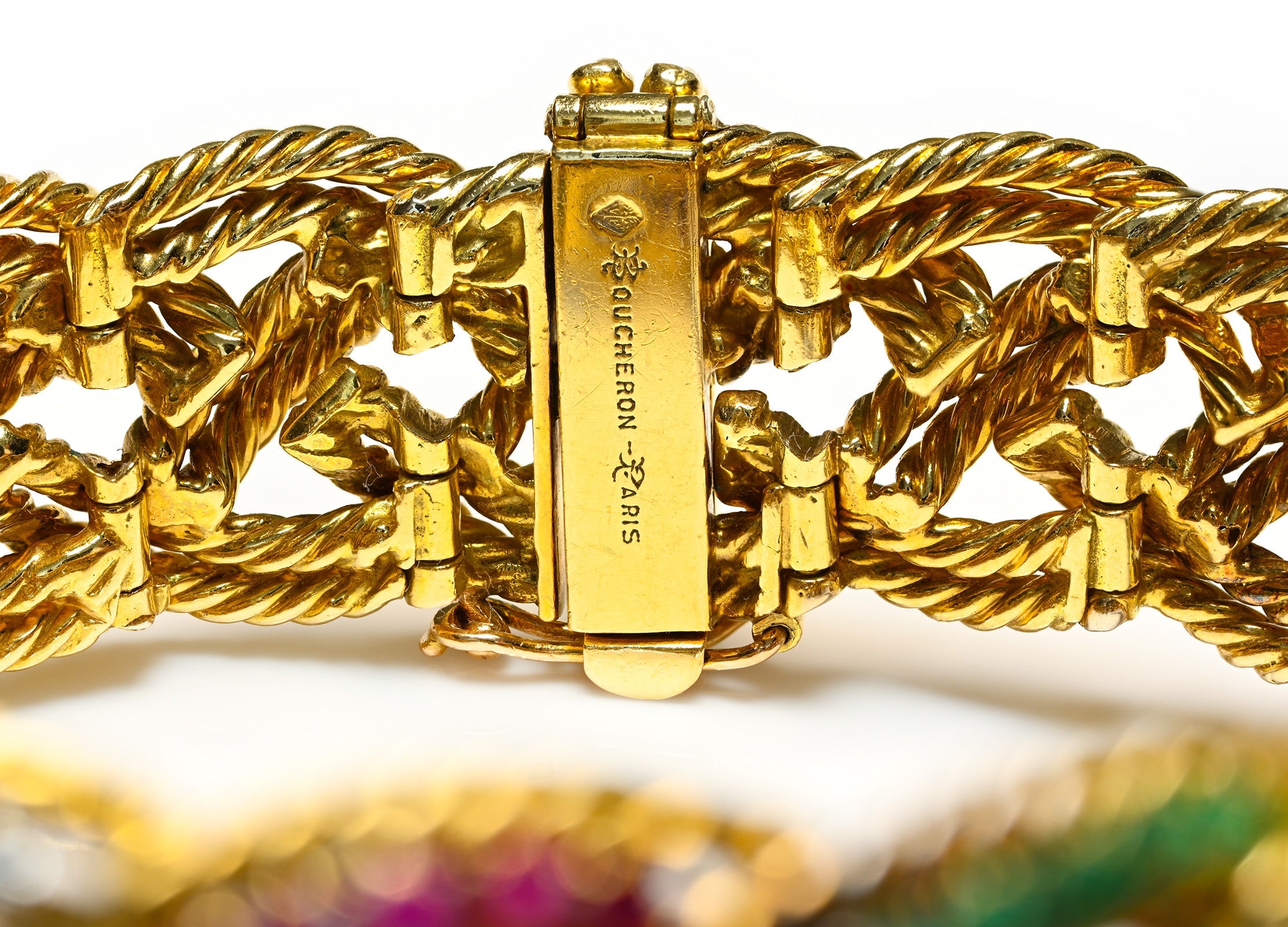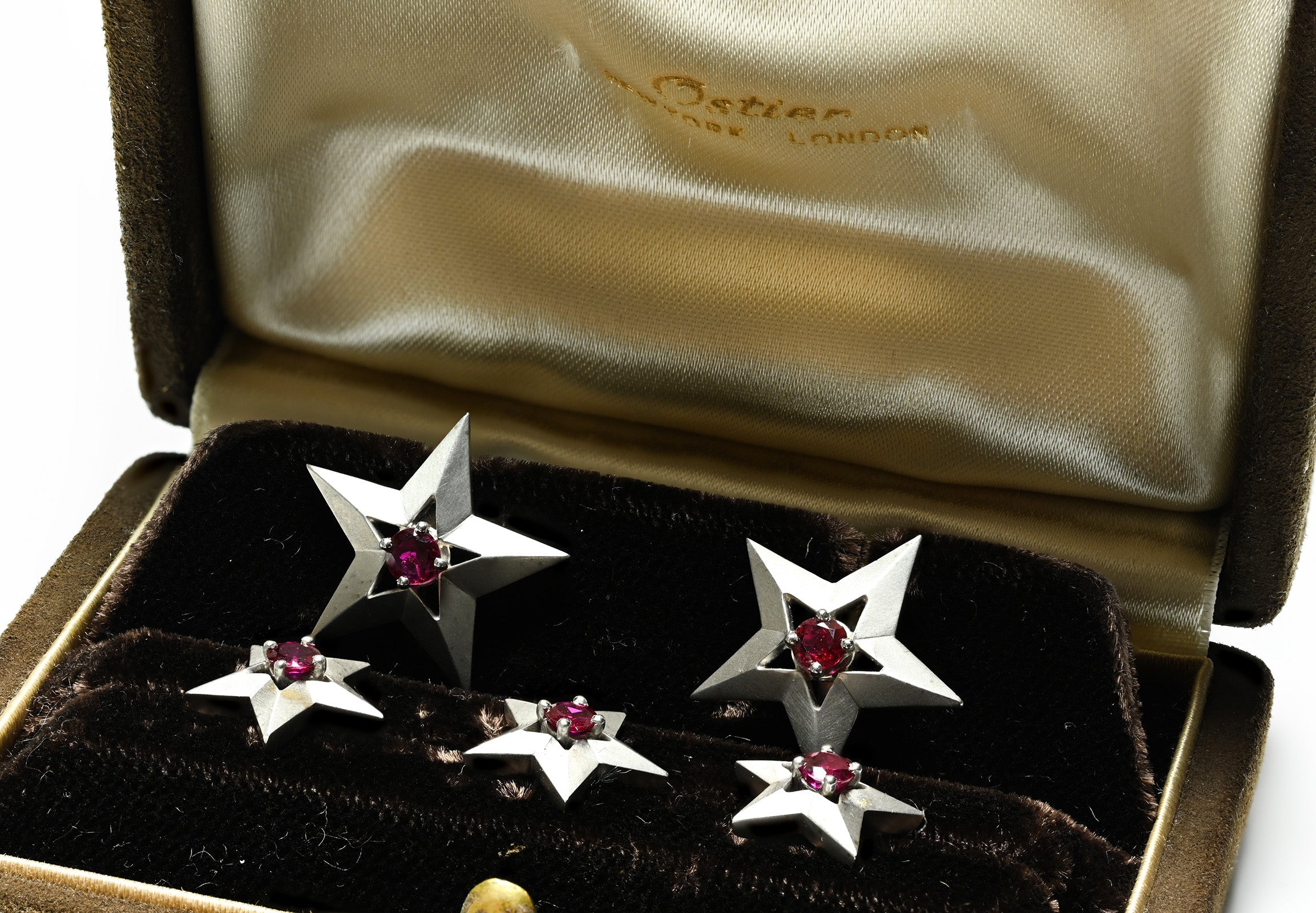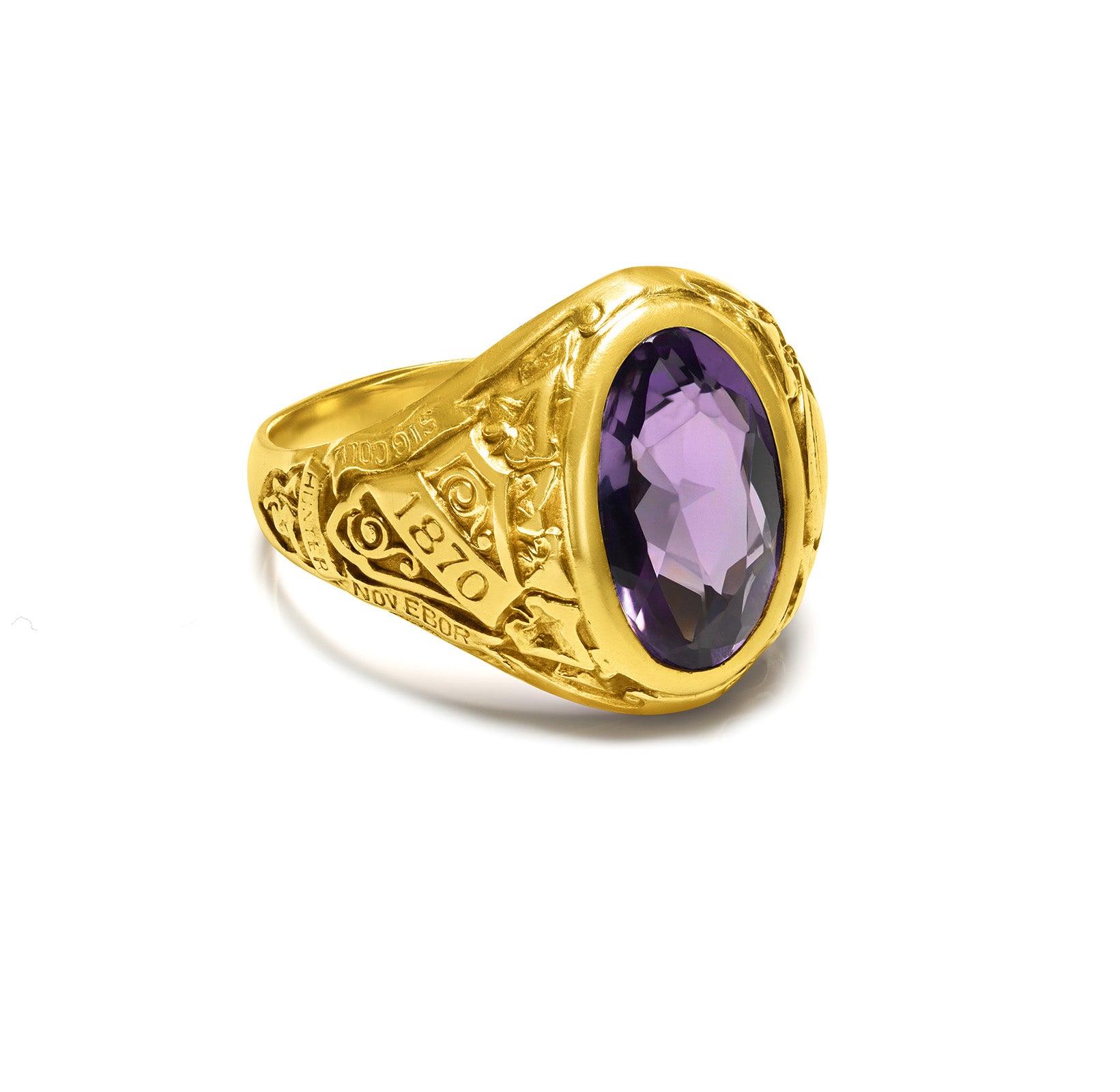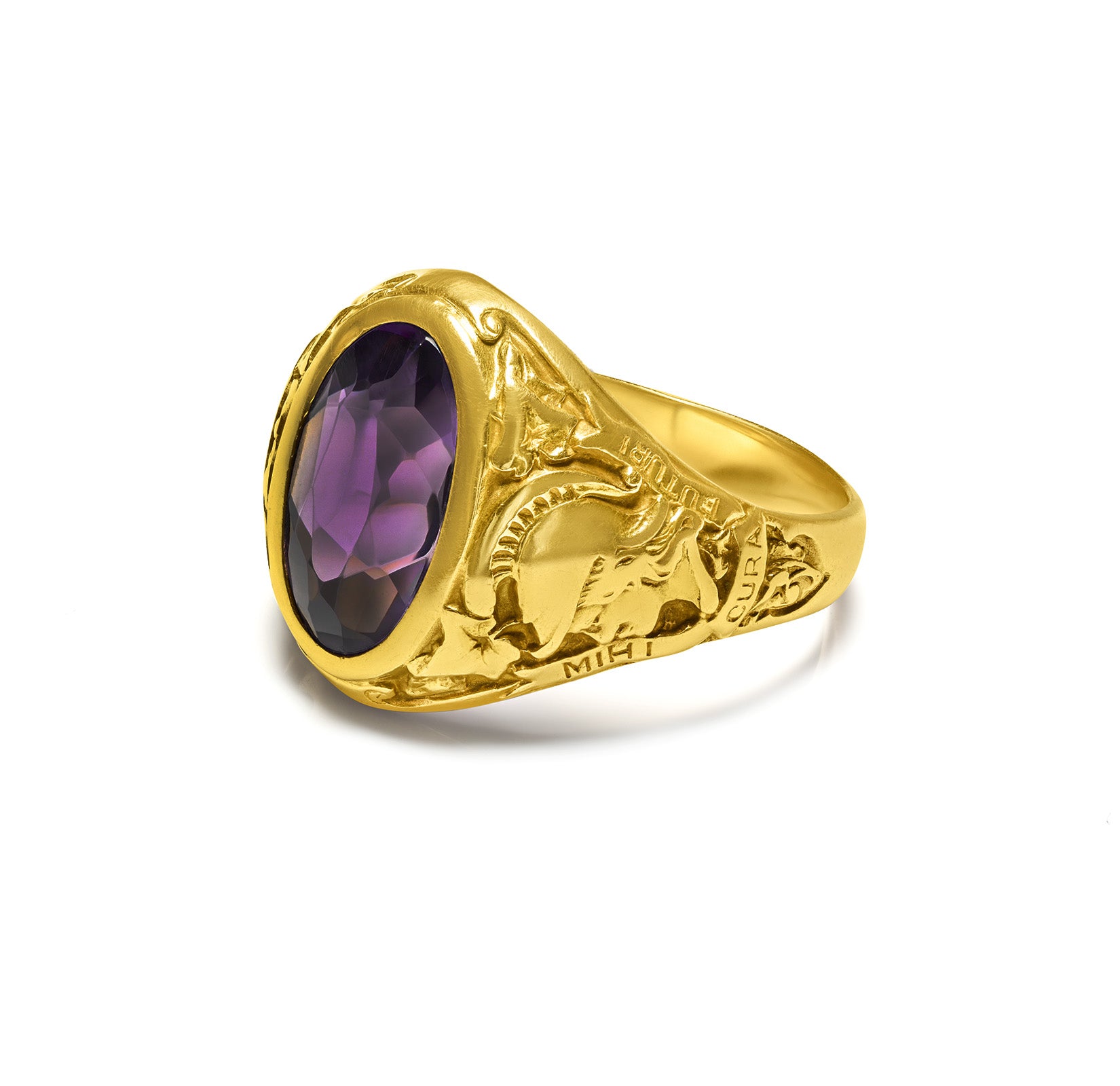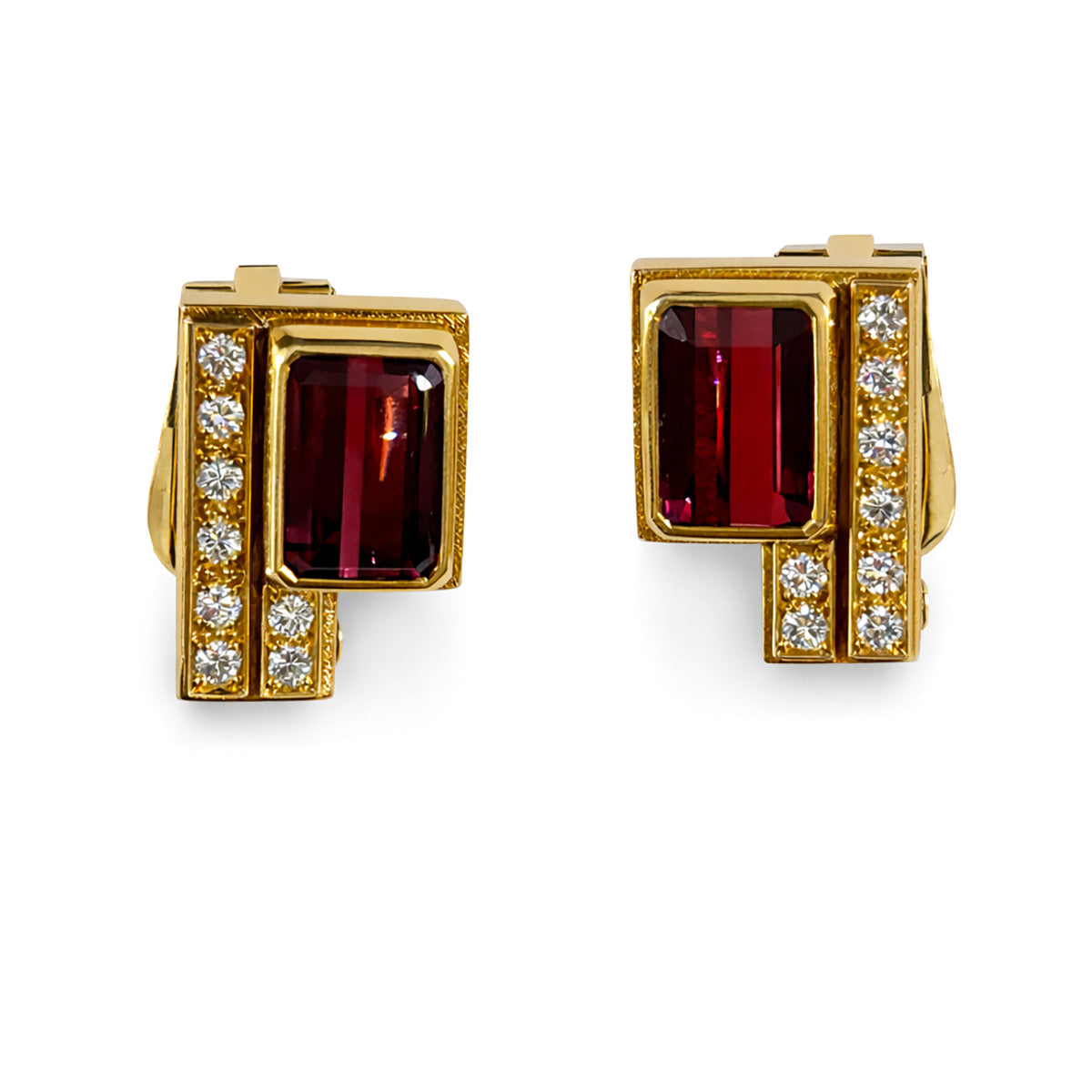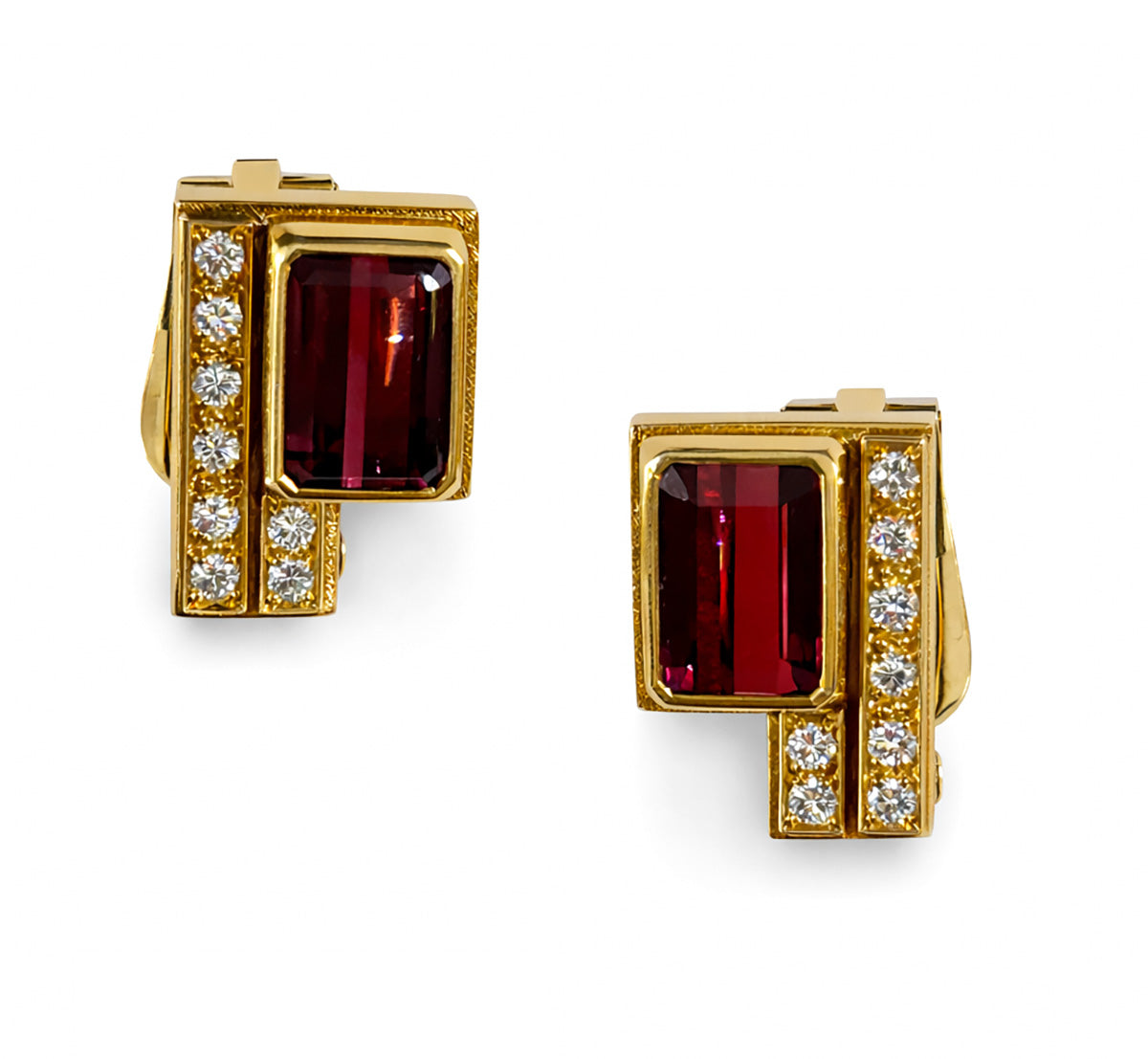
Art Deco Jewelry - Rediscovering The Joy Of Living After World War I
The Art Deco jewelry era, with its bold geometry and exotic influences, revolutionized luxury design from the 1920s to the 1930s, becoming a symbol of opulence.
The Art Deco period is most often associated with the opulent and energetic "Roaring '20s." This was a time marked by Prohibition, lavish cocktail parties, and flappers dancing the Charleston. Society was reacting against the rigid rules of the Victorian era, seeking indulgence after the disillusionment following World War I.
The war transformed women’s fashion dramatically. The physical labor women had to take on, in the absence of men, forced them to abandon corsets, roll up their sleeves, cut their hair, and shorten their skirts.
When the war ended, women were no longer willing to return to restrictive pre-war clothing, choosing instead to follow the new designs introduced by Paul Poiret and Coco Chanel. These social transformations laid the groundwork for the Art Deco movement, influencing the art, architecture, and jewelry of the time.
According to J. Mark Ebert, emerging around 1910 from the Art Nouveau style, Art Deco truly gained momentum in the years following World War I.
As Ebert explains in his work "Art Deco, The Period, The Jewelry", although known for its distinctive jewelry designs, Art Deco encompassed a wide array of art forms, objects, and even architecture.
The movement’s influence waned with the onset of World War II, but its lasting impact continues to resonate as one of the most unique and influential design periods of the 20th century.
The Origins of Art Deco
Art Deco drew inspiration from diverse sources, but the arrival of Sergei Diaghilev's Russian Ballet in Paris in 1909 is often considered a key influence.
Diaghilev's production of Scheherazade in 1910, with its bold, exotic sets and costumes featuring vibrant color schemes like red and black or blue and green, captivated audiences.This distinctly Oriental flavor excited and intrigued the public, significantly impacting the decorative arts of the time.
Avant-garde artists like Matisse collaborated on these theatrical productions, further integrating modern art movements such as expressionism, futurism, and cubism into the public consciousness and shaping the aesthetic of Art Deco.

The discovery of King Tutankhamun's tomb in 1922 also fueled an obsession with Egyptian motifs, which became prevalent in Art Deco jewelry and design.
Prominent jewelers of this time adapted Egyptian influences in their designs and popularized them worldwide. Scenes from ancient Egyptian life were now depicted on bracelets, rendered in new color combinations by mixing lapis lazuli with gold and carnelian with turquoise.
Additionally, European fascination with African art, jazz, and American dance forms influenced the movement, bringing a sense of global and cross-cultural dynamism to its aesthetic.
Central American Colombian motifs and African tribal art, often expressed in masks and ebony heads, also had a significant influence on this new aesthetic.
Indian jewelry, which had become highly popular in the early 20th century, also inspired 1920s jewelers, both in style and color. Carved gemstones, commonly used in Indian jewelry, were fashioned into flowers, leaves, fruits, and other colorful accents.
Islamic art also influenced design motifs with its stylized forms and rich color accents.
Persian designs featuring flowers, plants, and arabesques were lavishly rendered in emeralds and sapphires or jade and lapis lazuli.

Characteristics of Art Deco Jewelry
Jewelry design during the Art Deco period mirrored the movement's larger design principles, focusing on bold geometry, symmetry, and vibrant color contrasts.
While not all jewelry from the 1920s and 1930s fits within the Art Deco style, many pieces share common traits. Motifs ranged from floral designs to exotic symbols like Egyptian scarabs or Aztec pyramids.
However, the most iconic pieces are geometric and symmetrical, reflecting the influence of cubism on the movement. Color played a crucial role in Art Deco jewelry.
Platinum, combined with diamonds or crystal, formed the basis of many designs, with dramatic infusions of colored gemstones adding vibrancy to the predominantly white palette.
Materials Used in Art Deco Jewelry
The primary materials for fine Art Deco jewelry were platinum and diamonds, chosen for platinum's strength, resistance to tarnish, and malleability, which allowed intricate designs. However, during the Great Depression, white and yellow gold became more common as affordable alternatives.
Diamonds were a staple of Art Deco designs, both as large solitaire stones and in intricate settings of smaller stones. Techniques like pavé setting replaced earlier Edwardian styles, emphasizing smooth, continuous surfaces of gemstones. Colored gemstones—such as rubies, sapphires, emeralds, black onyx, jade, and turquoise—were also widely used.
The period also saw the rise of synthetic gemstones like flame-fusion synthetic rubies and sapphires, as well as the widespread use of pearls, especially cultured pearls.
Enameling, although less popular than in the Art Nouveau era, was still used in Art Deco jewelry, often in red and black, influenced by Oriental design trends. Costume jewelry also flourished, thanks in part to Coco Chanel, who made it both fashionable and chic.
Materials like Bakelite, aluminum, glass, and rhinestones became popular, with costume pieces seen as playful, stylish adornments rather than mere imitations of fine jewelry.

Innovations
Several jewelry innovations took place during this period. According to author Oxana Ghenciu ("Art Deco Jewelry – History and Precious Examples"), gem cutters learned to maximize the brilliance of stones in new ways, creating novel cuts and shapes arranged in mosaic-like patterns.
Different diamond cuts were organized based on their brilliance, luminosity, and reflective qualities required for the design.
The use of platinum in Art Deco jewelry, with its greater hardness, reduced the amount of metal needed for secure stone settings, allowing for lighter, more airy designs. A less expensive platinum substitute, developed in 1918 and known as osmior, plator, or platinor, quickly became popular among artisan jewelers.
Lacquering techniques from the Far East replaced the more labor-intensive and expensive enameling popular earlier in the century. Chinese lacquer workers, who polished airplane propellers during the war, were organized into studios to polish jewelry and accessories.
Perhaps the most significant innovation was the "serti invisible" or invisible setting, developed by Van Cleef & Arpels, allowing stones to be set using a groove-and-rail system without any visible metal.
A process for implanting pearls into oysters led to the mass production of cultured pearls, making them the iconic jewelry of the 1920s.
Popular Types of Art Deco Jewelry
The types of jewelry favored during the Art Deco era reflected the modern attitudes of the time. Victorian styles like cameos, tiaras, and ornate hair combs were discarded in favor of simpler, more streamlined designs. The sautoir, a long necklace often ending in tassels, became a popular choice, as did long, dangling earrings that complemented short hairstyles.
Bracelets, especially bangle bracelets worn on the upper arms or wide, diamond-encrusted platinum pieces, were also fashionable. The double-clip brooch, which could be worn as one piece or separated into two clips, became an iconic piece of the era.

Pendant by Van Cleef and Arpels - Photo Credit: Tim Evanson via Wikimedia Commons
Wristwatches gained popularity during this period, often designed with intricate settings of diamonds and gemstones. Renowned jewelry houses like Cartier crafted some of the most exquisite timepieces of the era, including pendant and lapel watches adorned with jewels.

Necklace by Rene Lalique via Wikimedia Commons
Names That Shaped the Art Deco Jewelry Era
While much Art Deco jewelry was mass-produced, the finest pieces were handcrafted by renowned designers and jewelry houses, many of whom were based in Paris.
French designers like René Lalique, who had been a major figure in Art Nouveau, also contributed to early Art Deco jewelry. Henri Vever, Paul Brandt, and Georges Fouquet were among the other notable designers who bridged the two movements.
René Lalique
Born in 1860 in Aÿ-Champagne, René Lalique became one of the greatest names of his time, renowned both as a jeweler and master glassmaker.
While Lalique is more commonly associated with the Art Nouveau movement, his transition to Art Deco saw him embrace geometric patterns and modern materials.
Lalique’s designs during this period incorporated glass, enamel, and gemstones in unconventional combinations. His work often drew inspiration from nature but interpreted it through the modern, streamlined aesthetic of Art Deco.
He also pioneered the use of glass in fine jewelry, challenging traditional notions of preciousness and beauty.

Necklace by Rene Lalique via Wikimedia Commons
Cartier
No discussion of Art Deco jewelry would be complete without mentioning Cartier, one of the most famous luxury jewelry houses in the world. Under the leadership of brothers Louis, Pierre, and Jacques Cartier, the company became synonymous with the elegance and grandeur of the Art Deco period.
Louis Cartier, in particular, played a crucial role in shaping the brand’s aesthetic, drawing inspiration from the machine age and exotic cultures, including India, Egypt, and China.
Cartier's Art Deco creations were a departure from the soft, flowing lines of Art Nouveau. Instead, they embraced the sleek, geometric patterns that defined the period, using strong contrasts like black onyx with white diamonds, vivid colored gemstones, and abstract motifs.
The famous "Tutti Frutti" jewelry collection, a hallmark of the Art Deco era, exemplifies Cartier’s bold use of color, combining rubies, emeralds, sapphires, and diamonds in lush, asymmetric designs inspired by Indian jewelry. Cartier’s use of platinum, which became popular during the Art Deco period for its strength and ability to hold intricate settings, was another innovation that defined their pieces.

Tutti Frutti Bracelet by Cartier - Photo credit: Tim Evanson via Wikimedia Commons
Van Cleef & Arpels
Founded in 1906, Van Cleef & Arpels rose to prominence during the Art Deco era due to its exceptional craftsmanship and innovative designs.
The brand’s adherence to the Art Deco aesthetic was invigorated by Émile Puissant, who, from 1918, provided the Maison with new stylistic and commercial momentum.
The creative output of Van Cleef & Arpels between 1919 and the early 1930s paralleled the developments and diversity of the Art Deco movement.
The company was particularly known for its use of innovative techniques, such as the "Mystery Set," which allowed gemstones to be set with no visible metal. This innovation became a signature of the brand and contributed to the clean, sleek lines characteristic of Art Deco jewelry.
Van Cleef & Arpels' designs during this period were bold, focusing on symmetry and architectural forms. They used a variety of materials, from diamonds and precious gemstones to unconventional materials like lacquer, coral, and rock crystal. Their pieces reflected the sophistication of the Jazz Age, with motifs inspired by Orientalism, ancient Egypt, and modern machinery.
Like Cartier, Van Cleef & Arpels embraced the use of platinum, enabling the creation of lighter, more intricate designs.
Georges and Jean Fouquet
Georges Fouquet played a pivotal role in shaping the Art Deco jewelry style. As president of the jewelry group at the 1925 Exposition, he worked behind the scenes, encouraging his peers to embrace innovation.
While today fashion and jewelry are often viewed as superficial, in the 1920s many believed that changing trends could help people move beyond the horrors of World War I. French jewelers, looking to the future, sought fresh designs, free from traditional motifs like bows, flowers, and swags.
To articulate his vision of modern jewelry, Georges Fouquet authored several articles and books. One notable passage from his work La Bijouterie, la Joaillerie, la Bijouterie fantaisie au XXe Siècle offers a particularly insightful perspective on modern jewelry.
Fouquet wrote, “The jewels most likely to endure are not ostentatious displays, but those in which the metal is associated with raw materials of financial value less than their beauty, like aquamarine, amethyst, topaz, or tourmaline. Art, which never ages, will prolong the career of these jewels. They will never be disassembled so that the materials can be used in a different form. They are, first of all, works of art rather than financial investments.”
His son, Jean Fouquet, was one of the most avant-garde designers of the Art Deco period. Jean shared his father's passion for innovation and sought newness in design. As a founding member of the Union des Artistes Modernes, a group dedicated to promoting modern art, he actively contributed to the movement. He also wrote for L’Esprit Nouveau, the journal of his close friend, architect Le Corbusier.
Jean’s jewelry featured bold, geometric designs with distinct Cubist influences. Like many of his contemporaries, he favored grey gold over platinum and incorporated unconventional materials such as ebony and chrome-plated steel.
He preferred colorful stones like aquamarine, citrine, and topaz over more expensive gems like diamonds. Lacquer and enamel were also prominent in his work. His creations were striking, often oversized, and he was particularly fond of cuff bracelets and statement rings.
Many of their ideas remain strikingly relevant today, much like Jean Fouquet's timeless bracelet designs. Le Corbusier’s thoughts on history resonate particularly well: “To be modern is not a fashion, it is a state. It is necessary to understand history, and he who understands history knows how to find continuity between that which was, that which is, and that which will be.”
This insight reinforces the enduring nature of bold, forward-thinking design—a trend we can expect to see in the jewelry of the coming years.
Raymond Templier
Raymond Templier was a French jeweler renowned for his strong, geometric designs, which perfectly embodied the spirit of the Art Deco movement. His work was heavily influenced by Cubism and the rise of the machine age, with his jewelry often featuring sharp angles, bold lines, and symmetrical patterns.
Templier's use of materials was equally innovative, combining traditional gemstones with less conventional materials like lacquer and steel. Templier's pieces were more architectural than ornate, emphasizing form and function over embellishment.
He was part of the "Union des Artistes Modernes," a group of designers who sought to break away from traditional design principles and embrace modernism. His work is often seen as a precursor to the minimalism and industrial design movements that would follow in the mid-20th century.
Like many "artist-jewelers" of his time, Templier downplayed the importance of precious metals, often using silver and white gold, enhanced with black and occasionally green lacquer or enamel. However, diamonds were a different story; he incorporated them generously for their sparkle and transparency, using them to illuminate his pieces much like an architect uses windows to expand a space.
As the Great Depression set in, Templier's designs became more curved and sensual, with yellow gold taking a more prominent role in his metalwork.
A defining feature of Templier's craftsmanship was his personal design of every piece bearing his signature. His sketches reveal his fascination with the interplay of arcs and inverted triangles—distinctive elements that continually shaped his style.
These motifs were employed in innovative ways, with his most notable achievement being the dynamic expression of volume and light, resulting in some of the most striking and refined jewelry of the Art Deco era.
Suzanne Belperron
Suzanne Belperron, a trailblazer in jewelry design, boldly redefined the art with her unique aesthetic. Though considered one of the most influential women jewelers of the 20th century, she remains largely unfamiliar to the public, known primarily among collectors. When asked why she never signed her creations, Madame Belperron simply stated, "My style is my signature."
Belperron's jewelry is bold, innovative, and sculptural. Her work was deeply influenced by her travels and by ancient civilizations, and she often incorporated motifs from African, Asian, and Celtic art into her pieces. She was also known for using non-traditional gemstones, such as smoky quartz, chalcedony, and citrine, in bold and unexpected ways.
Suzanne combined precious stones with unconventional materials that other Parisian jewelry houses would never have used. She mixed precious stones and natural pearls with semi-precious stones in the same piece of jewelry and had a habit of carving rock crystal and setting diamonds on it. One of the techniques Belperron used is the Honeycomb Setting, in which she combined stones of different sizes to achieve a harmony of colors and a stunning visual effect.
With influential clients such as Elsa Schiaparelli, the Duchess of Windsor, and Diana Vreeland, Belperron is widely recognized as one of the most significant designers of the 20th century.
Wearing Belperron during the 1930s symbolized sophistication and high social status.
Art Deco - One of the Most Creative Artistic Movements
The Great Depression dampened demand for luxury items, and the outbreak of World War II brought an abrupt end to the Art Deco era.
However, the movement has had an enduring influence on design, and its revival in the 1960s reignited interest in this innovative and distinctive style.
Today, Art Deco remains celebrated as one of the most creative and defining design movements of the 20th century.
References: "Art Deco, The Period, The Jewelry" by J. Mark Ebert

